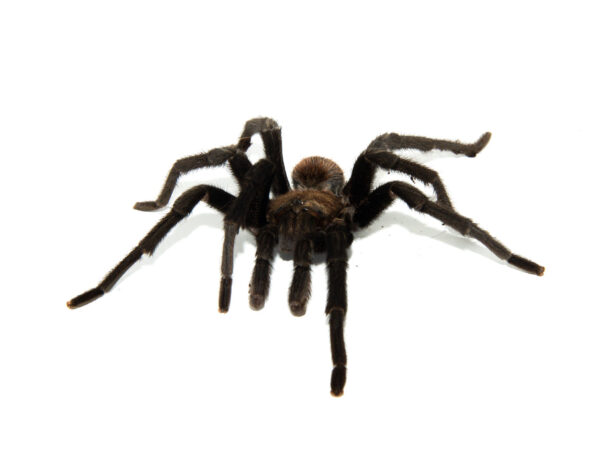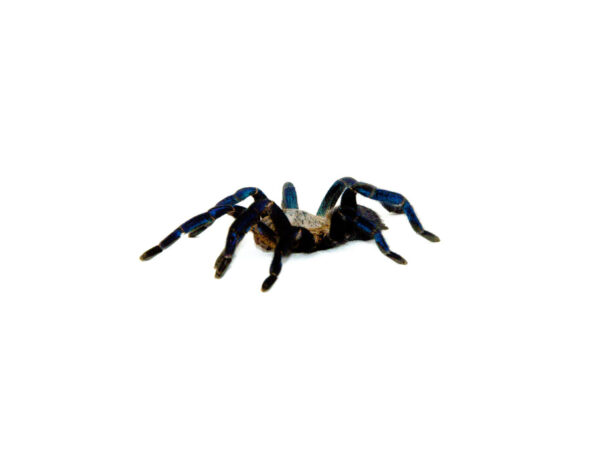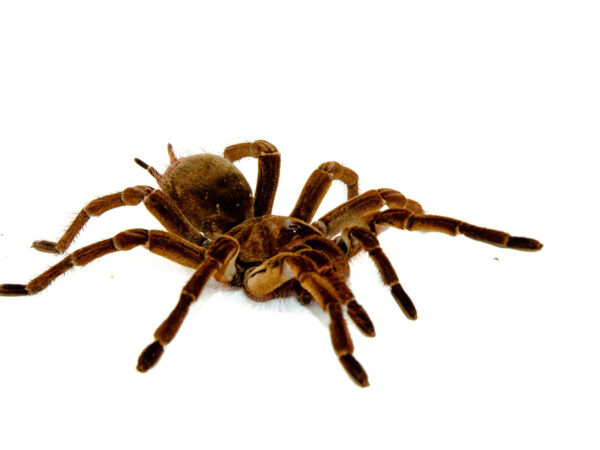Orange Baboon Tarantula (Pterinochilus murinus): The Fiery OBT
The Orange Baboon Tarantula (Pterinochilus murinus), often referred to in the hobby as the “OBT” or “Orange Bitey Thing,” is infamous for its fiery temperament and stunning coloration. This old-world species hails from the dry scrublands of Africa and is admired for both its beauty and its attitude. While not recommended for beginners, experienced keepers find this tarantula fascinating and rewarding.
Striking Appearance Orange Baboon Tarantula (Pterinochilus murinus
The Orange Baboon Tarantula (Pterinochilus murinus) comes in a variety of color morphs, the most popular being the vibrant orange form. Other known morphs include brown, red, dark, and a rare white variant—each found in different regions across East Africa.
Physical Characteristics:
-
Size: 4–6 inches leg span
-
Color: Bright tangerine-orange with a pumpkin-hued carapace (in the “orange” morph)
-
Pattern: Radiating leg striping and rugged hair texture
-
Fangs: Large and strong, typical of old-world tarantulas
Their impressive colors and unique body shape make them a top display tarantula, though they are rarely seen out of their deep webbed burrows.
Temperament: Not for the Faint-Hearted Orange Baboon Tarantula (Pterinochilus murinus
The Orange Baboon Tarantula is notorious for its defensiveness. This species is extremely fast, reclusive, and not afraid to throw a threat posture when disturbed. It’s known to deliver painful bites, though it usually prefers to escape confrontation.
Temperament Overview:
-
Extremely defensive, not aggressive unless provoked
-
Lightning-fast reflexes
-
Not handleable – zero tolerance for stress
-
Known for creating impressive tunnel systems of webbing
This species will thrive when left alone and observed from a distance, making it ideal for display rather than interaction.
Enclosure & Habitat Setup
The Orange Baboon Tarantula (Pterinochilus murinus) is a fossorial species that loves to dig and create elaborate web networks. An ideal enclosure should mimic their natural arid environment and allow space for both burrowing and web-building.
Enclosure Tips:
-
Size: 12” x 8” x 8” minimum for adults
-
Substrate: 4–5 inches of dry coco fiber or sandy soil
-
Humidity: 50–60%, with a small water dish
-
Temperature: 75–82°F
-
Decor: Cork bark for a hide, with anchor points for webbing
Avoid over-misting the enclosure, as this species thrives in dry conditions with occasional water access.
Diet and Feeding Habits
The Orange Baboon Tarantula is a fierce feeder. It will hunt with aggression, often pouncing on prey with no hesitation. Feeding time is a dramatic and exciting event.
Diet Includes:
-
Crickets
-
Dubia roaches
-
Mealworms or superworms (in moderation)
Feed juveniles twice a week and adults once a week. Always remove uneaten prey within 24 hours to avoid stressing the tarantula or interfering with a pending molt.
Molting and Growth
Like all tarantulas, the Orange Baboon Tarantula molts as it grows. Molting is essential for regenerating lost limbs and replacing worn exoskeletons.
Signs of Molt:
-
Refusal to eat
-
Webbing itself into a chamber or tunnel
-
Dull coloration and sluggish movement
Leave the tarantula undisturbed for at least a week after molting to ensure its new exoskeleton hardens fully before feeding resumes.
Lifespan and Breeding
With proper care, female OBTs can live up to 12 years, while males usually live 3–4 years post-maturity. Breeding this species is relatively straightforward but should only be attempted by experienced keepers due to their volatile temper.
Breeding Notes:
-
Male should be well-fed before introduction
-
Supervise interactions closely
-
Egg sacs may contain up to 150–200 spiderlings
Captive-bred slings are increasingly available and tend to be more predictable than wild-caught specimens.
Final Thoughts
The Orange Baboon Tarantula (Pterinochilus murinus) is not your average beginner spider. It commands respect with its intense coloration, aggressive feeding habits, and elaborate web structures. While not suitable for handling or close interaction, it’s a favorite for display tanks and respected for its bold personality.
If you’re looking to add an eye-catching, no-nonsense tarantula to your collection, this species is an unforgettable choice.









Reviews
There are no reviews yet.